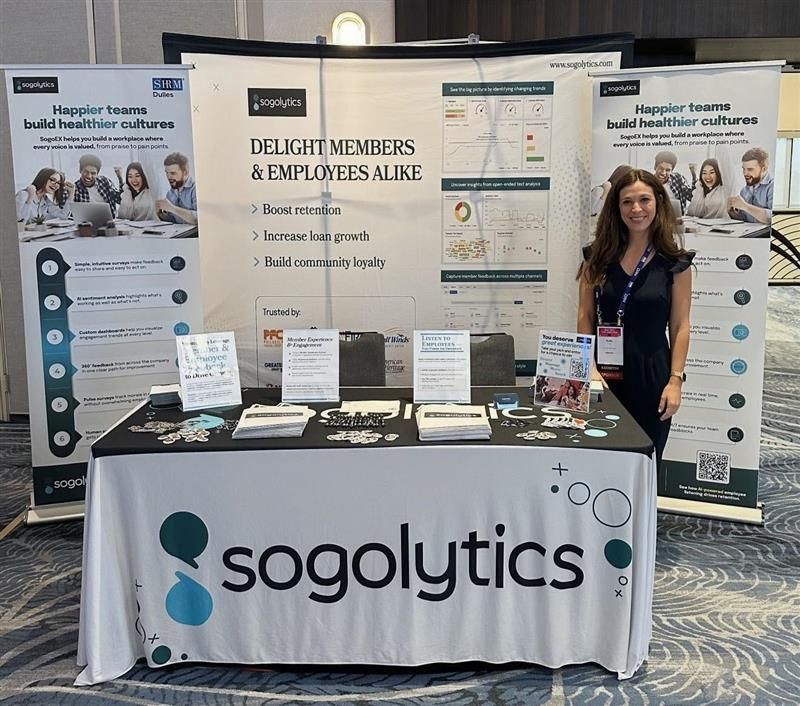“We hear you.” “We’re listening.” “We get you.”
Marketing departments have churned out so many variations on this phrase that the very concept now borders on the cliche. Practically every business says that they are genuinely “listening” to their customers and “hearing” their legitimate concerns, but what does that really mean? How, exactly, are organizations able to “hear” what all of their customers are saying, and what, exactly, are they doing with all of that feedback?
That is exactly what we decided to interrogate in our latest SogoX webinar, “Find out what your customers really want: Building a better VoC program,” available to watch in its entirety here.
The webinar, led by Sogolytics’ own Melissa Krut and Reticle Research founder Ross Rubin, explored the very concept of the “Voice of the Customer” (or VoC), examined the benefits of VoC research, reviewed some of the best tools and methods for capturing actionable customer insights, and talked through many more related topics and tips. In this blog, we’ll highlight some of the biggest and most critical questions and answers that were discussed during this webinar.
What is VoC?
Voice of the Customer (VoC) is a CX input component. VoC refers to initiatives to capture and understand customers’ feedback about their experiences and expectations for your business, products or services.
It’s basically a process for gathering all of the information regarding what exactly customers think and feel about their experiences with a brand. And that information is gathered from a wide variety of touchpoints, including direct and indirect customer communications.
Although VoC is just one piece of a larger customer data puzzle, it does tell the story behind so many other key metrics your business closely tracks. VoC enables you to listen to the voices behind your conversion rates, and bounce rates, and abandoned carts. Get your VoC program wrong, and you’ll see low response rates and limited value. Get it right, and you – and your customers – will quickly reap the benefits.
What are the components of VoC?
VoC data can be gleaned from a wide variety of sources and customer touchpoints.
There are multiple methods for collecting invaluable VoC data, including:
- Qualitative research, such as customer interviews, focus groups, etc.
- Web and app usage analytics
- Social media monitoring
- Customer feedback forms
While there are clearly lots of ways to “listen” to the Voice of the Customer (which can and should be used in conjunction with one another), there’s one especially effective and direct way to find out what your customers think about you: just ask them.
What is a VoC survey?
A survey is a great way to directly ask customers about their thoughts regarding your company and their usage of your products and services.
There are multiple types of VoC surveys which your company can conduct. During the webinar, Ross and Melissa highlighted three survey types in particular:
- Net Promoter Score (NPS): An NPS survey is a simple survey for measuring customer loyalty. The survey asks customers some variation on the question, “On a scale from 0 to 10, how likely are you to recommend this product/company to a friend or colleague?” Customers who score between 0 and 6 are considered “detractors,” while those who score 7 or 8 are “passives,” and those who score 9 or 10 are “promoters.” Obviously, the goal is to turn passives and detractors into satisfied customers and active promoters of your brand.
- Customer Health Score (CHS): While the NPS measures customer loyalty, the CHS measures customer health – is the customer “healthy” or “at risk”? CHS surveys measure three elements of customer behavior, often referred to as BDF: Breadth (the breadth of usage for the product or service, such as whether it’s being used by the customer’s entire household or company), Depth (what are the key features that the customer is using), and Frequency (how often is the customer using the product or service). A CHS survey gets to the heart of exactly how (and how often) customers are using your product or service.
- Customer Effort Score (CFS): A CFS survey allows you to measure the ease with which customers are able to use your product or service, resolve a customer support issue, or get the information they need from your company. Similar to the NPS, a CFS survey asks customers to rate their effort on a scale of 0 to 7, which ranges from Very Easy to Very Difficult. CFS surveys can be used to gauge the “convenience factor” of your products and services, your customer support offerings, or your website.
The best way to conduct these various VoC surveys is by using a customer feedback platform like Sogolytics. With SogoCX, you can easily distribute these surveys through mulitple channels, automatically track the results, and identify patterns and other actionable insights using the platform’s advanced reporting capabilities.
Learning more from the Voice of the Customer
Obviously, there’s a lot more to be said on this topic. And during the webinar, Melissa and Ross did indeed have a lot more to say, including in-depth advice on how and when to ask the critical VoC questions listed above. You can watch their entire discussion on the Voice of the Customer by viewing the full webinar recording.
Ready to elevate your company’s VoC and CX programs? Connect with us today and we’ll be glad to share how we can help! And while you are at it, check out additional sessions on our SogoX series to broaden your professional development!















